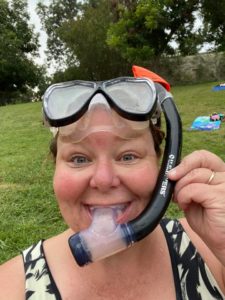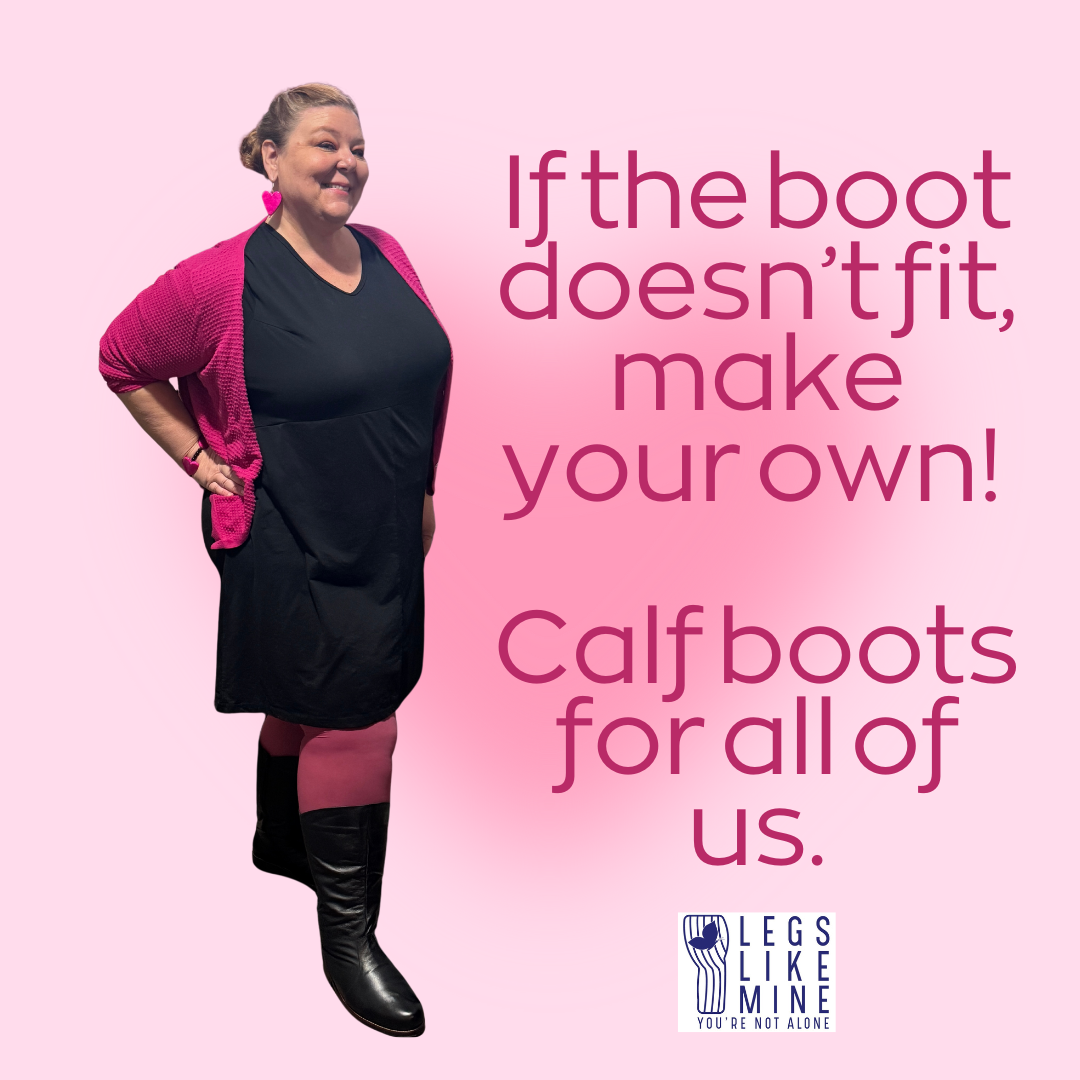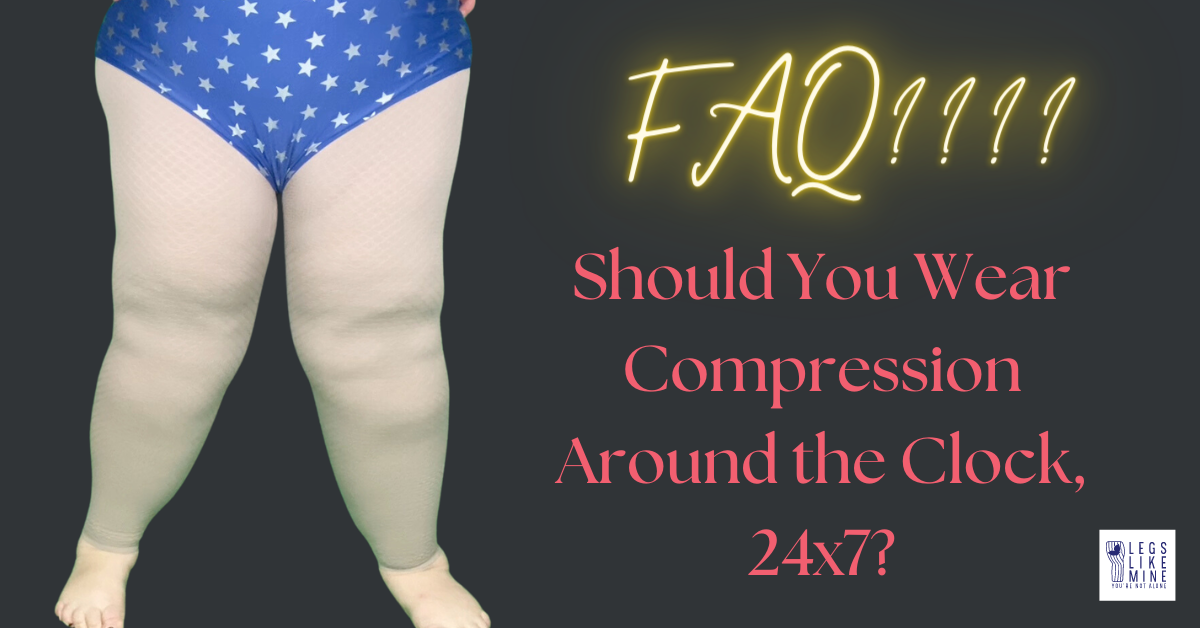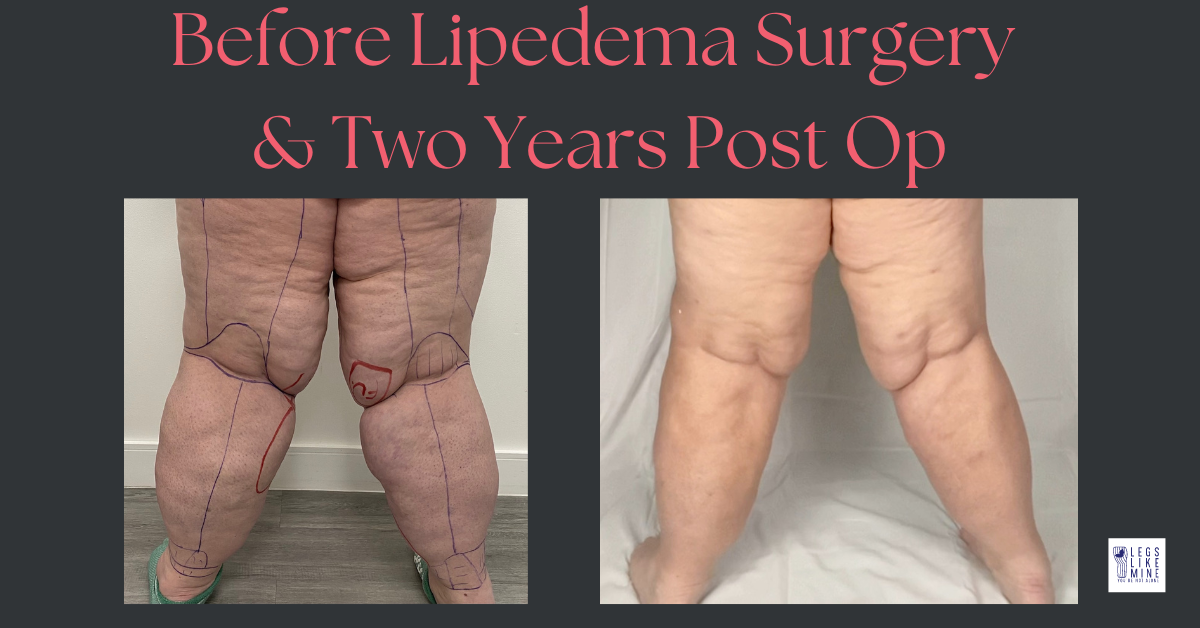Well hello friends!
I wanted to make a post that I can refer to when our sisters reach out to me when they’re having concerns, anxiety, or general questions about how I travel so much with Lipedema and Lymphedema. In a normal year, I take several cross-country road trips, at least one international trip, and tens of cross-country airline flights. I’ve figured out a good system and am sharing a few pointers with you here.
- I wear compression when my feet are down for any significant period of time, and I always do when I fly. My choice is bioflects for easier compression, and then I usually put on a Velcro wrap on my lower left leg, where I also have lymphedema that tends to blow up when I’m not careful. My second choice in compression right now is Absolute Support. It’s a circular knit, and is also much firmer for very long flights, but I find I have to mess with it more frequently to keep it from bunching up behind the knees and cutting into me. It looks very beautiful and smoothing if I’m wearing something a little shorter. I also don’t have to wear the Velcro wrap for extra compression when I wear the Absolutes.
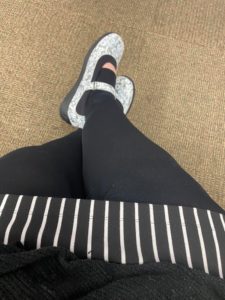
- I keep my shoes on for the whole trip, no matter how long it is. Good, either tying sneakers or my now-famous Drew Rose Mary janes. I’ve literally seen non-lippy people take their shoes off on international flights and not be able to get them back on when we land because of normal swelling. I wear good shoes that are great for walking in, so I don’t have to deal with foot pain on top of the normal rush and bustle on travel days.
- I really am careful about not eating added salt, alcohol and caffeine a couple of days before travel, including travel day. In fact, when the flight attendants offer drinks, I usually will go with water-no ice. This helps avoid additional swelling and water retention, and dehydration.
- I carry a quart sized water bottle with me and fill it as soon as I get through the TSA checkpoint. I have water with me ALWAYS to stay hydrated.
- I carry my own set of seatbelt extenders, made by FAA repair stations. SW has its own more-triangular shape buckle, but most of the rest use a similar style. But when I forget and in the odd times when my extender doesn’t work, I am just matter of fact, “hey can I get an extender from you when you have a chance, please?” to the flight attendant. We are considered people with disabilities, and we do have a right to fly, and to be safe. Note, I always return the extender to the attendants as I walk out so they don’t have to find it on their own or depend on the cleaning crew to return it.
- When I can haggle it, I upgrade. When I can’t upgrade, I watch the seat maps on the airline apps like a hawk and move my seats around several times, to do everything I can to set next to an open seat. I always look on the seat maps for ‘moveable armrest’ on the seat I select, because those permanent, solid armrests are the cause of misery and pain, and travel bruises.
- I take advantage of the Southwest Airlines Persons of Size policy. The way it works is you book two seats. For me, it would be like this. Seat 1: Susan O’Hara, Seat 2: Susan XS O’Hara. On travel day, check in at the counter and if the agent doesn’t pick up on what you’ve done, tell the agent you have an extra seat. They will give you a preboard card, which you do want to use. You’ll also get a ticket to put on your extra seat that says, “seat reserved.” When you preboard, make eye contact with the flight attendant and find your seat. It’s good to smile and tell them you have an extra seat. I’m pretty bold usually and ask if they’d help me protect it. Sometimes I even bring tape and tape the “seat reserved” sign on the headrest of the seat. When people try to sit there, I just point to the card, and it always works. Now the BEST part about the SWAA policy is that if the flight doesn’t oversell, they refund you for the extra seat! But you have to ask for it. So, unless you hear them trying to buy people out of their seats before takeoff, you’re probably in luck. Email the airline your flight information and ask for the refund for the person of size policy.
- After the flight, I leave my compression on for at least a couple of hours, unless I’m getting in water. But oh, if you can get yourself in a pool or the ocean do it. That compression is very good and it’s all over the body, not just the legs. Swim as much as you can as often as you can.
- If you’re still having swelling problems, go Legs on the Wall. What I mean by this is lay on the bed and put your feet as high up as you can on the headboard, for as long as you can. Even better, rub your legs and do a little lymphatic massage, or even very deep breathing to help lymph flow. Five minutes would be amazing, longer, even more.
- Now the next one is a personal decision, but I prefer to not travel with my flexitouch pump for a few reasons. #1 is that it’s very expensive and I really don’t want to risk it being broken with all the bumps that happen to things on travel, whether checked or caried. Yes, you can carry an extra bag free if it’s a medical device (#2 here)… but my whole pump setup is two legs and a hip portion, and it fills up a large under bed storage bin, so it would be a pain to carry on. #3 no way I’m checking in something that expensive and breakable.
- In lieu of pumping, I do manual lymphatic drainage using the techniques I learned from my therapist – there are many you tube videos on this. I also do the Dead Cat Shake, which I demonstrate for you here. I always take a few extra minutes in the shower or bath to do extra MLD, and on travel it’s even more important.
- Be prepared with powder if you’re travelling to someplace hot. Rolls and folks are miserable if you’re sweaty, so powder the second you start getting that unfresh, rubbing, or burning feeling!
- Elevation of the legs is your best friend, on travel, anytime and anywhere. Use your suitcase and prop your legs up at layovers, elevate on the plane if you can figure out a way, and elevate when you get to the hotel.
- On long flights, move your legs, do MLD, get up and walk around every hour you’re awake. Go in the restroom and really do MLD. Do circles, leg raises, leg stretches, etc. Move, move move to avoid getting swelling and blood clots.
- If you’re travelling for surgery, get wheelchair assistance on the way home every time. You never know how long the walk is going to be in different airports. I travel to LA and the Phoenix airport is one of my stops sometimes. It is GIANT, and the walk would not have been possible. Also, there are last minute terminal and gate changes that can send non-recovering people running, so be prepared and unashamed. You’ve had surgery for Pete’s sake! It is OK!
You may have other questions regarding travel. Hit me on Facebook, twitter, IG, or email @legslikemine@gmail.com. I’ll add my answers to this column.
Happy travelling and don’t let yourself be stuck at home. The world is your oyster!
